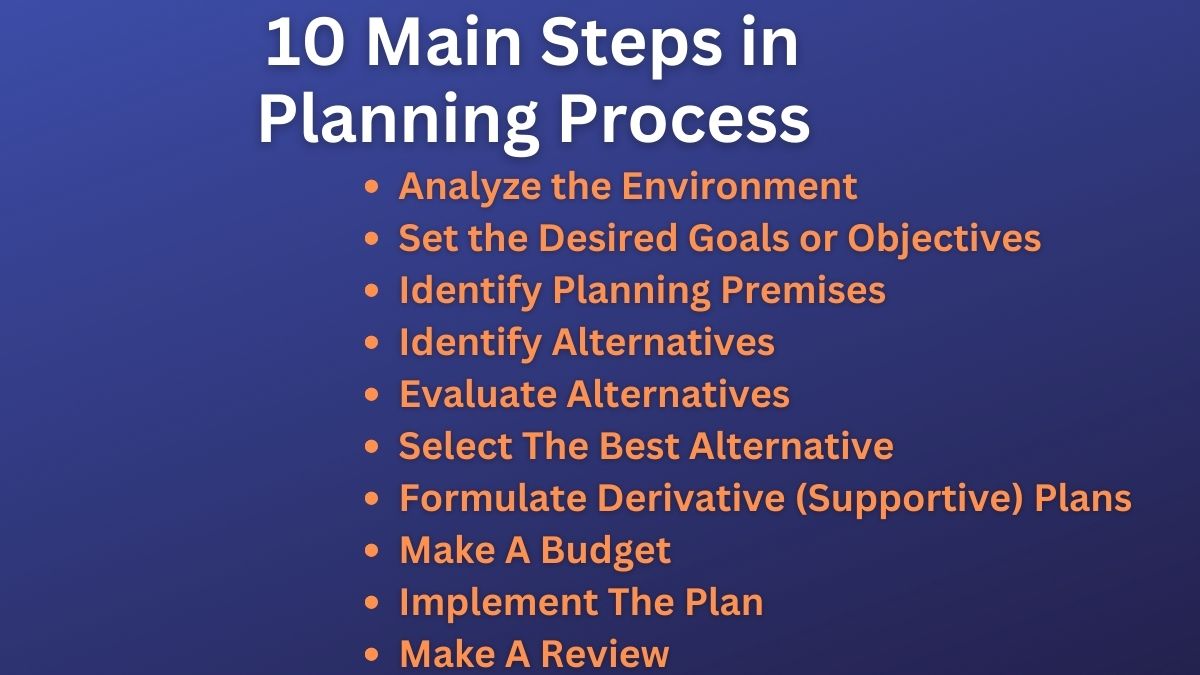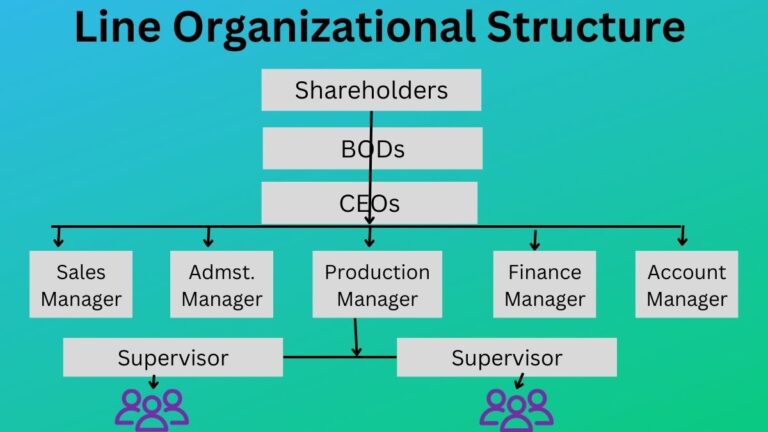10 Important Steps in Process of Planning [Explained]
What is Planning Process?
The planning process is a sequence of steps following which you can make an effective plan for yourself and for your organization’s goal achievement.
Planning itself is a process, that is to say, it defines the desired goals an organization wants to achieve and chooses necessary activities that are meant to achieve those organizational goals or objectives efficiently and effectively.
Planning is an important management function. It is important for an organization, it is the means of organizational success, growth, and prosperity. For this, you have to make a plan that is effective and that assures the desired goal achievement.
Usually, the common steps of making an effective plan include ten. Let’s understand how you can make an effective plan for your organization following these ten steps.
10 Steps In Planning Process
When you are making a plan you are making a roadmap that portrays your starting point (where you are now) and endpoint (where you want to be). Let’s discuss.
Analyze the Environment
The initial phase in the planning process is doing an environmental analysis. You should examine both the internal and external environments that affect your company. Your aim should be to recognize the possibilities and risks that arise from external forces as well as the strengths and weaknesses of your company.
Understanding your business weaknesses & strengths will assist you in deciding to what extent your business is capable of grabbing the potential opportunities and mitigating the threats. Understanding the internal capability of your business and the opportunities coming is key to setting the right goal.
Set the Desired Goals or Objectives
Goals are the desired outcomes your business wants to attain in the near future. In the second step, you should set goals or objectives that are not only attractive but practical and achievable. You should not be over-ambitious while deciding the goals.
The goal you should set should be matching with your business’s internal capabilities to achieve and the potential opportunities. Once the goal is set, it should be divided into different departments, teams, sections, and individuals. In addition, your goal should be SMART, that is to say.
- Specific – Your goal should not be vague – should be precise and easy to understand.
- Measurable – It should be measurable in quantity – in addition, in terms of quality, quantity, cost, and time.
- Achievable – That is to say, the goal should be feasible and clearly describes why it is achievable.
- Rationale – The goal should be based on facts not only on assumptions.
- Time Bound – This should reflect a specific time within which the goal will be achieved.
Identify Planning Premises
Premises are the assumptions about the future conditions in which your current plan is to be implemented. It is simply forecasting eternal and internal environmental factors like – market conditions, resource availability, competition level, socio-cultural changes, political changes, sales conditions, organizational growth, etc.
Related: Pestle Analysis
Depending upon these premises plans are implemented. These assumptions may or may not be right, but at least they provide a guide upon which plans depend. For example, there is likely increasing competition in the coming days – you should be able to make competitive strategies and put aside some budget to beat such conditions.
Identify Alternatives
In this step of making an effective plan, managers have to identify all possible alternatives that would support in any way to organizational goal attainment.
There can be various alternatives to attain the goals in various situations i.e. premises. So while planning, you should identify each alternative in order to analyze them in terms of cost, benefits, quality, and contribution to goal achievement. However, you should narrow your choices down to the most suitable and significant options.
Evaluate Alternatives
After identifying and shortlisting the most important and suitable alternatives, the next task you have to do is to evaluate each of them. Evaluation of all available alternatives is not possible and can take much time and effort, so a short listing is way better.
The suitable alternatives should be evaluated in terms of their negative and positive contribution to desired goals or objectives. You should examine each alternative in terms of cost of production, cost of implementation, cash flow, profitability, availability of resources, the risk associated, the time required, etc.
In addition, you can list each of the alternatives, make a profile for each of them, determine the evaluation factors, and employ computer software to make the evaluation process faster and more efficient.
Select The Best Alternative
It is commonly said that in the process of planning, the difficult task managers do is to choose a suitable alternative. This alternative is the actual plan that is devised to achieve the desired objectives.
After successfully examining all alternatives, you should choose the alternative that aims to give the most promising results. You can choose a single alternative or a suitable combination of more alternatives.
However, your alternative selection is based on its potential benefits, your planning premises, your budget, and the capability of your business. Most importantly, the choice should match your business strengths and environmental opportunities and should ensure the effective exploitation of such opportunities.
The suitable choice not only ensures goal achievement but also gives proper direction to organizational efforts and motivates employees to actively work on it. In addition, if anything does not match choose the alternative that asks for low cost but gives satisfactory benefits.
Formulate Derivative (Supportive) Plans
Formulation of derivative plans means the formulation of supportive plans that ensure effective implementation of the main plan in goal achievement.
For example, your main plan is to host a motivation seminar, for this, your derivative plans would be informing your friends, running an advertisement on social media, designing and distributing pamphlets, etc.
It would be difficult for you to implement the main plan without supportive plans. Training your employees, delegating necessary authorities and responsibilities, designing relevant policies, and procedures, etc. could also be worth doing.
Make A Budget
It is obvious that for the implementation of plans the budget is necessary. After succession in the selection of the right alternate and the development of supportive plans, you should manage sufficient funds to carry out them effectively.
Implement The Plan
Finally, we come to the step where the plan is put into action to achieve the desired goals or objectives of the organization. The effective plan does not give the result itself unless it is effectively implemented.
You should implement the plan effectively, for this it is necessary to communicate to all the working members of the organization, give them the necessary authority to make the relevant decisions, provide instruction and guidance, and arrange necessary resources to effectively execute the given tasks, etc.
The person who initiates plans into action should be guided, instructed, and motivated to give optimum efforts in the implementation of the plan (s).
Make A Review
Finally, reviewing the implemented plan (s) is the last step of the planning process. It is the step to check whether the implemented plan is working or not in the course of organizational goal achievement.
Only implementation might not get the expected results because of uncertainties in the business environment. So reviewing the plan’s progress is as equally important as making the one. It makes it possible to take corrective action if any and ensure the right direction of the plan toward the desired goals achievement.
Read Next: Principles of Planning
Sajan Kushmi is a content writer with more than 4 years of experience. He holds BIM Degree. He write on the topics related to Management, Marketing, and Entrepreneurship.






